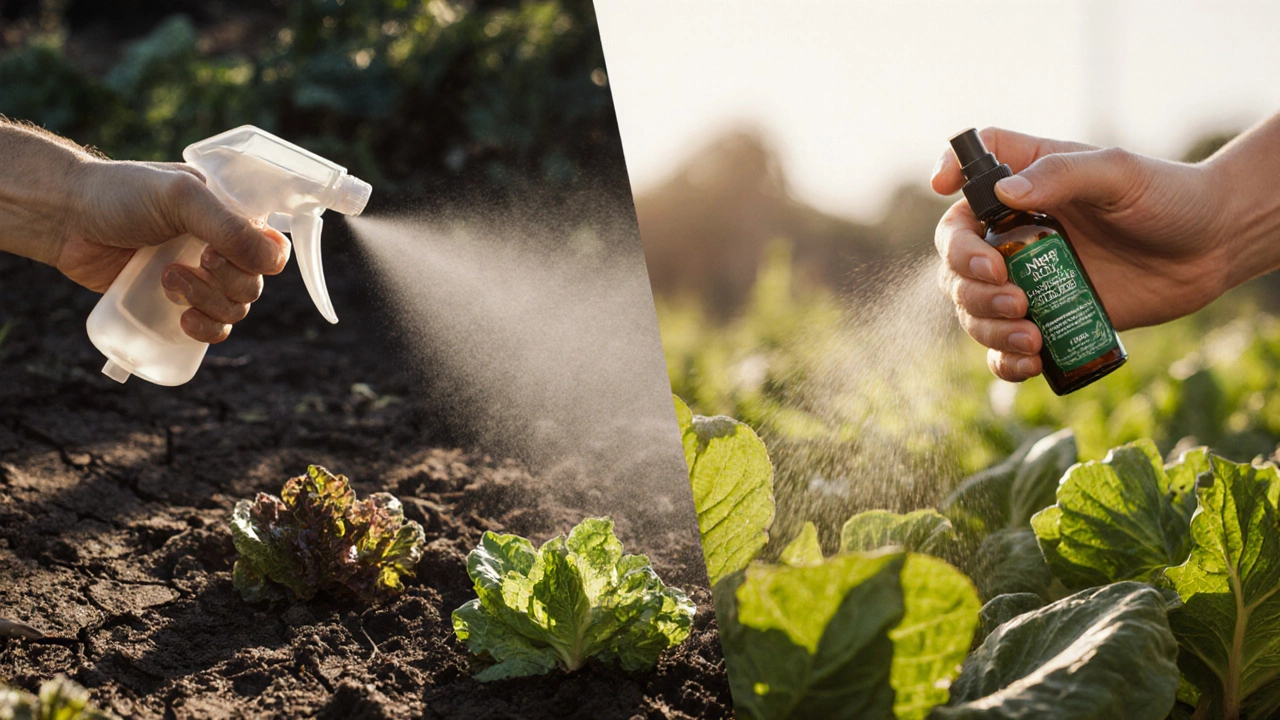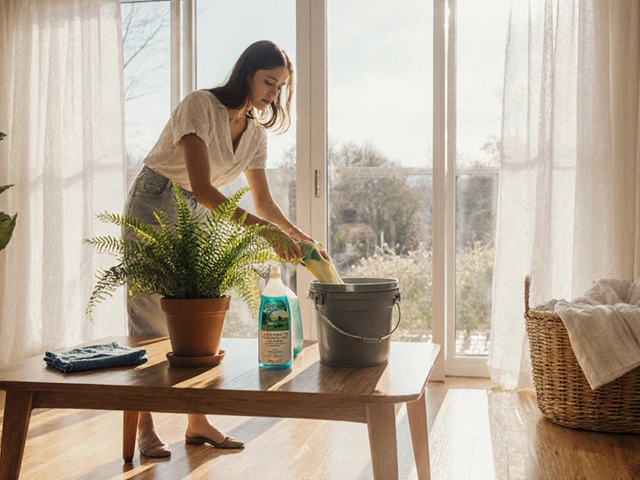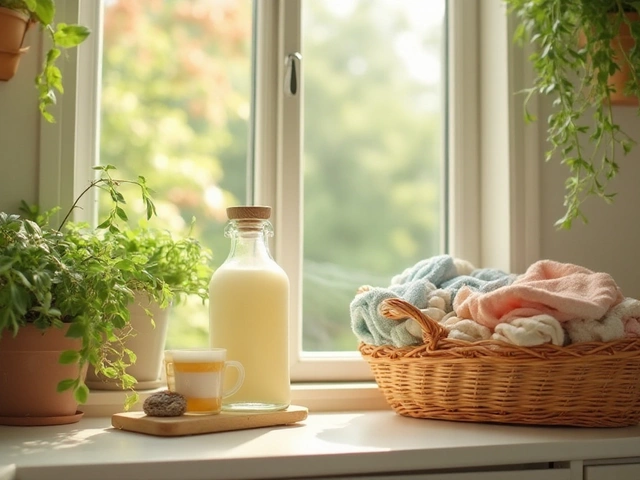When chemicals start choking the soil and your family’s health, it’s time to swap the synthetic sprays for eco-friendly pesticides. You’ll still keep pests at bay, but without polluting the garden, the water table, or the air.
What makes a pesticide ‘eco‑friendly’?
In plain terms, an eco‑friendly pesticide is one that breaks down quickly, targets only the intended pest, and poses little risk to humans, pets, pollinators, and beneficial wildlife. The key attributes are:
- Biodegradability - it disappears in the environment within weeks, not years.
- Selective action - it attacks the pest while sparing ladybugs, bees, and earthworms.
- Low toxicity - safe to handle with basic protective gear and unlikely to cause residue on food.
- Renewable sourcing - derived from plants, minerals, or naturally occurring microbes.
Understanding these criteria helps you compare products and avoid green‑washed labels that sound natural but act like conventional chemicals.
Top natural options you can trust
Below are the most widely vetted eco‑friendly pesticides, each introduced with a brief definition and the pests they control best.
Neem oil is a cold‑pressed extract from the seeds of the neem tree (Azadirachta indica). It works as an insect growth regulator, disrupting feeding and reproduction of a range of soft‑bodied insects.
- Targets: aphids, whiteflies, spider mites, cabbage loopers.
- Application: dilute 1‑2 % in water, spray foliage until wet.
- Safety: low toxicity to mammals, breaks down in sunlight within a few days.
Pyrethrin is a natural insecticide extracted from the flowers of the chrysanthemum (Chrysanthemum cinerariifolium). It attacks the nervous system of insects, causing rapid knock‑down.
- Targets: beetles, caterpillars, flies, mosquitoes.
- Application: use as a ready‑made spray or mix 0.5‑1 % concentrate.
- Safety: quickly degrades in sunlight; avoid direct contact with honeybees while they’re foraging.
Diatomaceous earth consists of fossilized diatom shells, sharp at a microscopic level. When insects crawl over it, the silica particles abrade the exoskeleton, causing dehydration.
- Targets: slugs, snails, ants, beetles.
- Application: sprinkle a thin layer around plant bases or create a barrier on soil.
- Safety: non‑toxic to humans and pets; wear a dust mask during handling.
Spinosad is a bacterial fermentation product derived from Saccharopolyspora spinosa. It attacks the insect’s nervous system but is safe for most vertebrates.
- Targets: thrips, leafminers, fruit flies, caterpillars.
- Application: mix 0.5‑1 % solution, apply as a foliar spray.
- Safety: low risk to mammals, but harmful to aquatic life - avoid runoff.
Bacillus thuringiensis (Bt) is a soil‑borne bacterium that produces toxins specific to caterpillars and some fly larvae. When ingested, the toxin ruptures the insect gut.
- Targets: cabbage worms, corn earworms, mosquito larvae.
- Application: spray spore suspension on leaf surfaces; reapply after heavy rain.
- Safety: harmless to humans, birds, and most beneficial insects.
Insecticidal soap is a simple blend of potassium salts of fatty acids. It penetrates the insect’s waxy coat, causing cell collapse.
- Targets: aphids, mealybugs, spider mites, whiteflies.
- Application: spray until foliage is thoroughly wet; avoid copper‑sensitive plants.
- Safety: non‑toxic, but can cause leaf burn if applied in direct sun.
Copper fungicide is a mineral‑based spray that interferes with fungal enzyme systems. While technically a fungicide, it’s often paired with insect controls to protect foliage.
- Targets: downy mildew, leaf spot, blight.
- Application: apply early in the season; avoid over‑use to prevent soil buildup.
- Safety: low toxicity to mammals; caution with aquatic environments.
Horticultural oil (often called dormant oil) is a highly refined petroleum or plant‑based oil. It smothers insects and their eggs.
- Targets: scales, spider mites, aphids, moth eggs.
- Application: spray during dormant season or early leaf-out; ensure thorough coverage.
- Safety: safe for most birds and mammals; keep off water bodies.
Quick side‑by‑side comparison
| Product | Active ingredient | Target pests | Application timing | Environmental impact |
|---|---|---|---|---|
| Neem oil | Azadirachtin | Aphids, whiteflies, spider mites | Every 7‑10 days during growth | Biodegradable, low toxicity |
| Pyrethrin | Pyrethrins | Beetles, flies, mosquitoes | Early morning or dusk | Degrades in sunlight, avoid bees |
| Diatomaceous earth | Silica diatoms | Slugs, ants, beetles | Before rain, reapply after watering | Inert mineral, safe for mammals |
| Spinosad | Spinosyns | Thrips, leafminers, fruit flies | When infestation first appears | Low mammal risk, avoid water runoff |
| Bacillus thuringiensis | Bt toxin | Caterpillars, mosquito larvae | Leaf surface, repeat after rain | Microbial, harmless to non‑target insects |
| Insecticidal soap | Fatty acid salts | Aphids, mealybugs, whiteflies | Cool, cloudy days | Non‑toxic, biodegradable |
| Copper fungicide | Copper ions | Fungal diseases | Early season, prevent spread | Low toxicity, monitor soil build‑up |
| Horticultural oil | Refined oil | Scales, eggs, mites | Dormant period or early growth | Smothers pests, minimal residue |
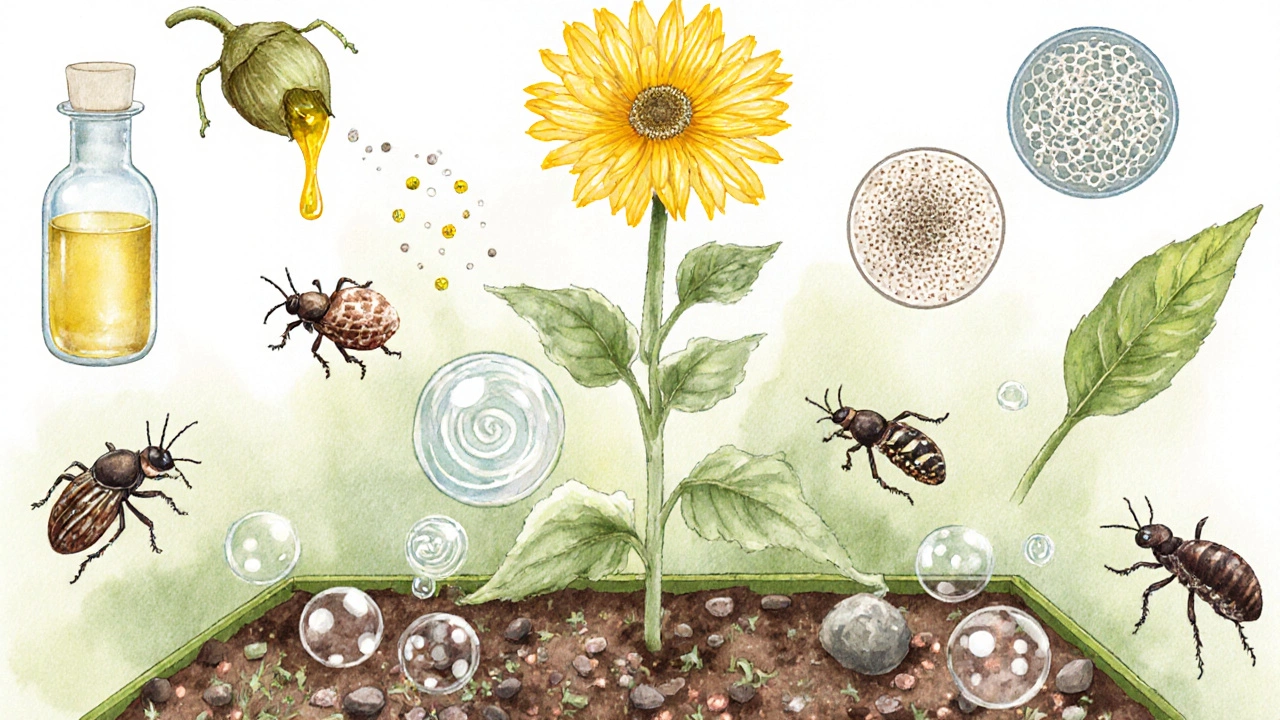
How to pick the right product for your garden
Start with a simple decision tree:
- Identify the pest - is it a chewing caterpillar, a sap‑sucking aphid, or a soil‑dwelling slug?
- Check the plant’s tolerance - some oils can scorch tender seedlings.
- Consider weather - pyrethrins need sunlight to break down; soaps should avoid hot sun.
- Match the product’s mode of action - growth regulators (Neem) work best for fast‑reproducing pests, while contact killers (Pyrethrin) are ideal for quick knock‑down.
- Look at local regulations - copper accumulates in certain soils, and some municipalities restrict oil use near water bodies.
When in doubt, start with the least invasive option - a spray of insecticidal soap or a dusting of diatomaceous earth - and step up only if damage persists.
Application tips that maximise effectiveness
- Mix correctly. Follow supplier ratios exactly; over‑dilution wastes product, under‑dilution can cause phytotoxicity.
- Cover both sides. Many pests hide on the underside of leaves. A thorough spray ensures contact.
- Time it right. Apply early in the morning or late afternoon when beneficial insects are less active.
- Rotate modes. Pests can develop tolerance. Rotate between a growth regulator (Neem) and a contact toxin (Spinosad) every few weeks.
- Watch the weather. Rain within 24 hours can wash away water‑soluble sprays, while high humidity can reduce soap efficacy.
Boosting natural control with beneficial insects
Eco-friendly pesticides work best when they’re part of an integrated pest management (IPM) plan. Introduce allies like ladybugs, lacewings, and predatory nematodes. A few quick pointers:
- Plant nectar‑rich flowers (dill, fennel, alyssum) to provide food for adult predators.
- Release ladybugs after a light spray of neem oil - the oil won’t harm them if the spray has dried.
- Avoid broad‑spectrum products (even natural ones) during peak pollinator activity.
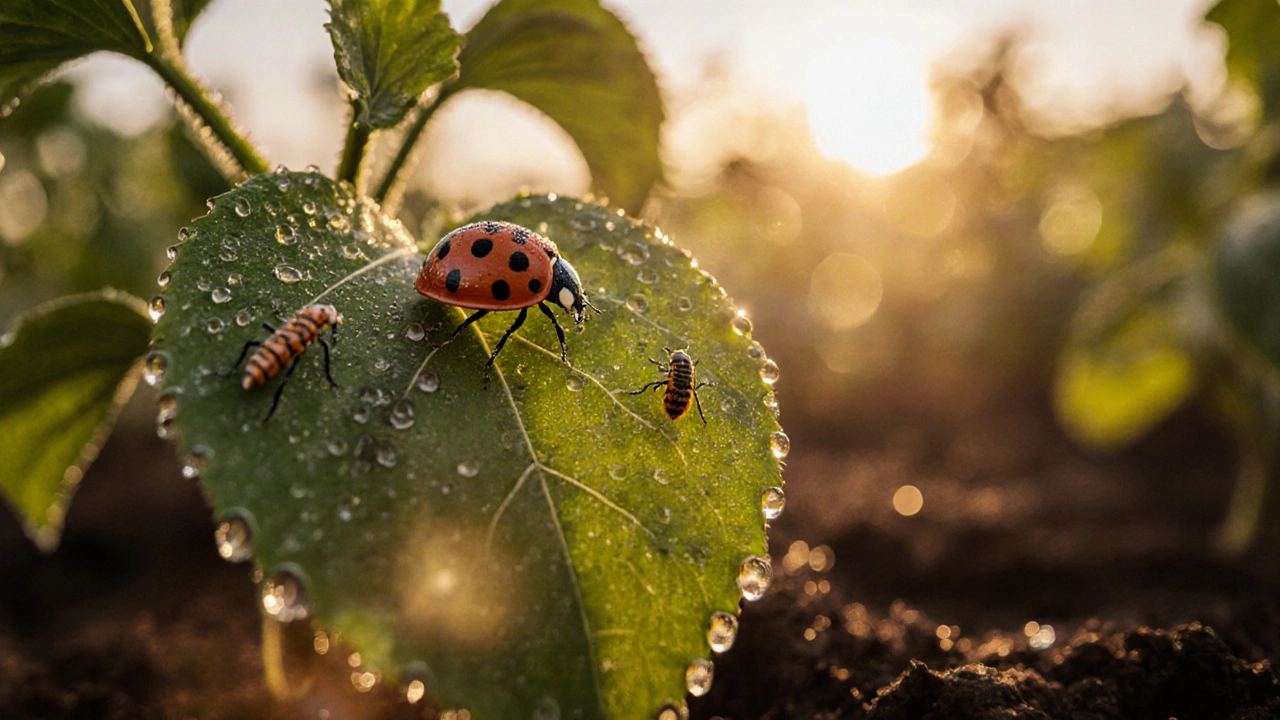
Common pitfalls and how to avoid them
Even the best eco‑friendly pesticide can backfire if you miss a detail.
- Over‑application. More isn’t better - excess oil can block stomata, leading to leaf scorch.
- Ignoring resistance. Repeated use of the same product (e.g., only neem oil) can select for tolerant pest strains.
- Mixing incompatible products. Soap and oil don’t mix; they cancel each other’s efficacy.
- Skipping the dry‑down period. Many botanical sprays need 24 hours to become fully active before rain.
Quick checklist before you spray
- Identify the pest and confirm it matches the product’s target.
- Read the label for dilution ratios and safety precautions.
- Test on a single leaf or a small plant section first.
- Apply during calm weather to prevent drift onto non‑target plants.
- Record the date, product, and observed results for future reference.
Frequently Asked Questions
Are eco‑friendly pesticides safe for pets?
Most plant‑derived products like neem oil, pyrethrin, and diatomaceous earth have low toxicity to dogs and cats. Still, keep pets off freshly sprayed foliage until the coating dries.
Can I use these products on edible vegetables?
Yes. Neem oil, spinosad, Bt, and insecticidal soap are approved for many food crops. Follow the pre‑harvest interval (often 3‑7 days) noted on the label.
Do I need a licence to apply copper fungicide?
In the UK, copper products for home gardens are exempt from pesticide licensing, but you must respect the recommended annual application limit (usually 4 kg per hectare) to avoid soil buildup.
How often should I reapply neem oil?
Apply every 7‑10 days during the growing season, or after heavy rain, to maintain coverage on new growth.
Is there a risk of harming bees with pyrethrin?
Pyrethrin breaks down within an hour of sunlight, but spraying when bees are actively foraging (mid‑day) can still cause mortality. Early‑morning or late‑evening applications minimise the threat.
